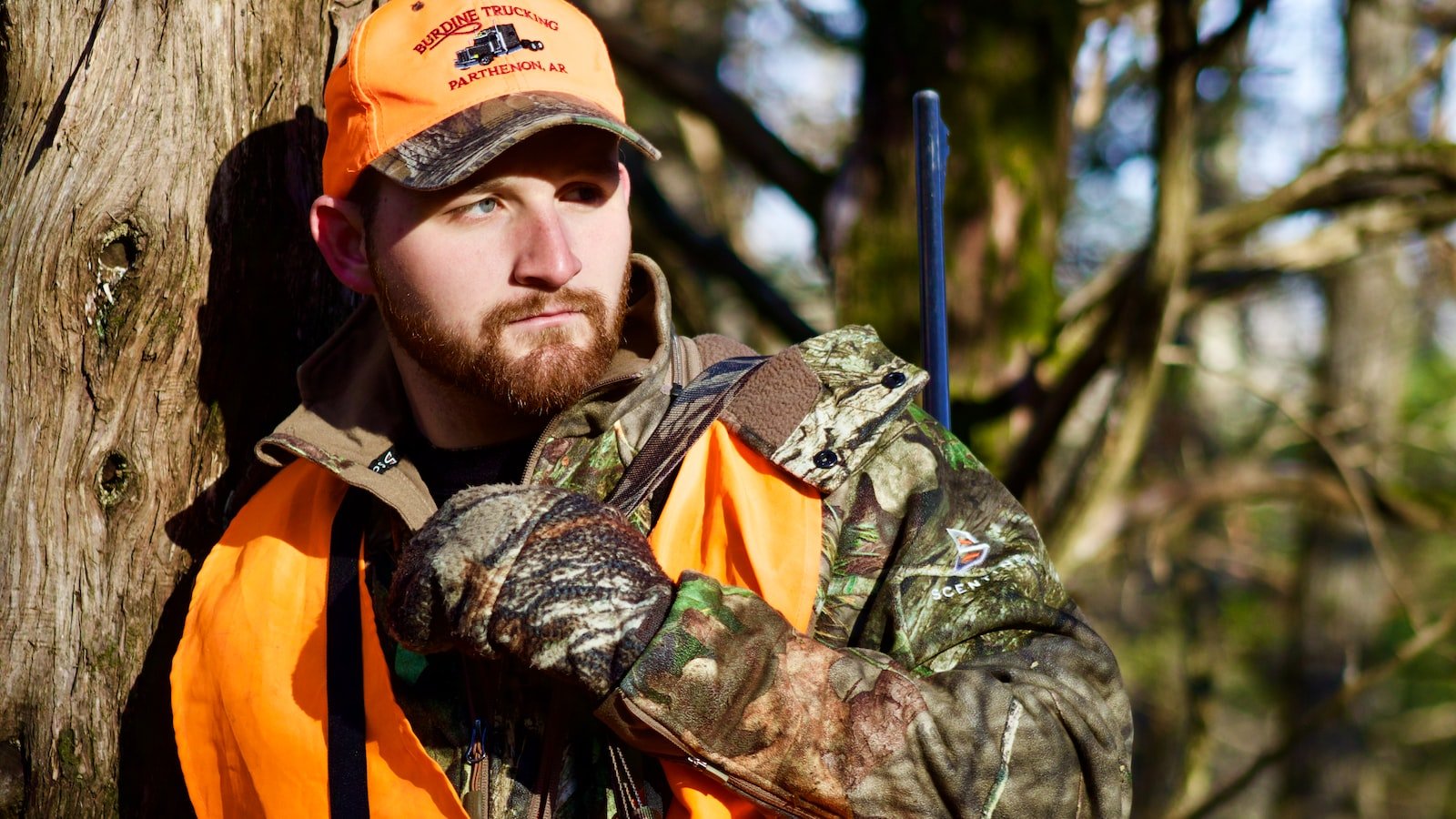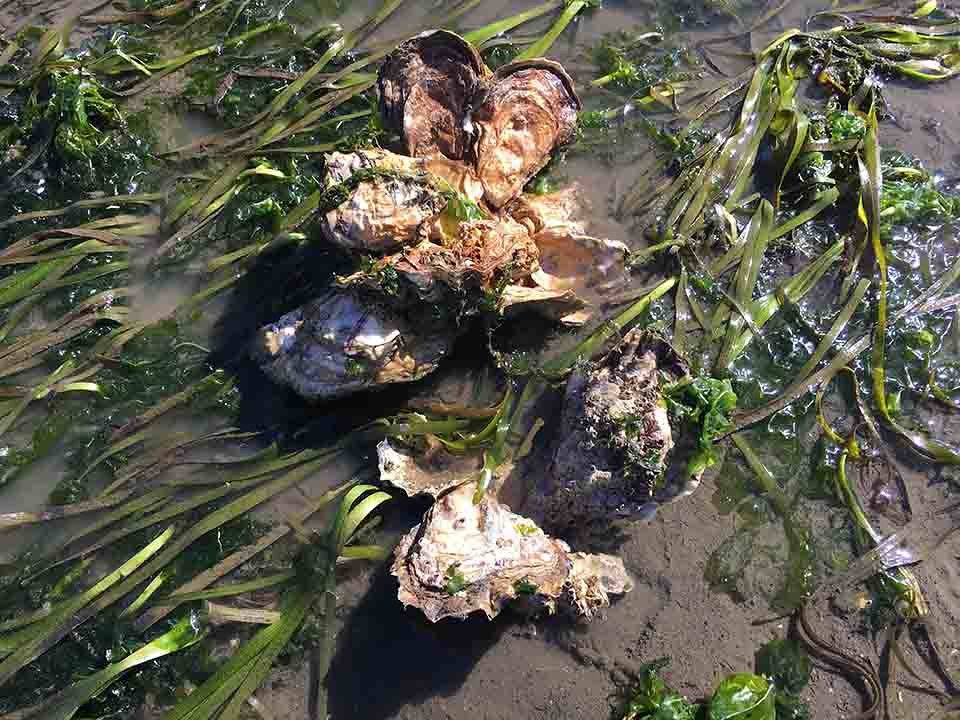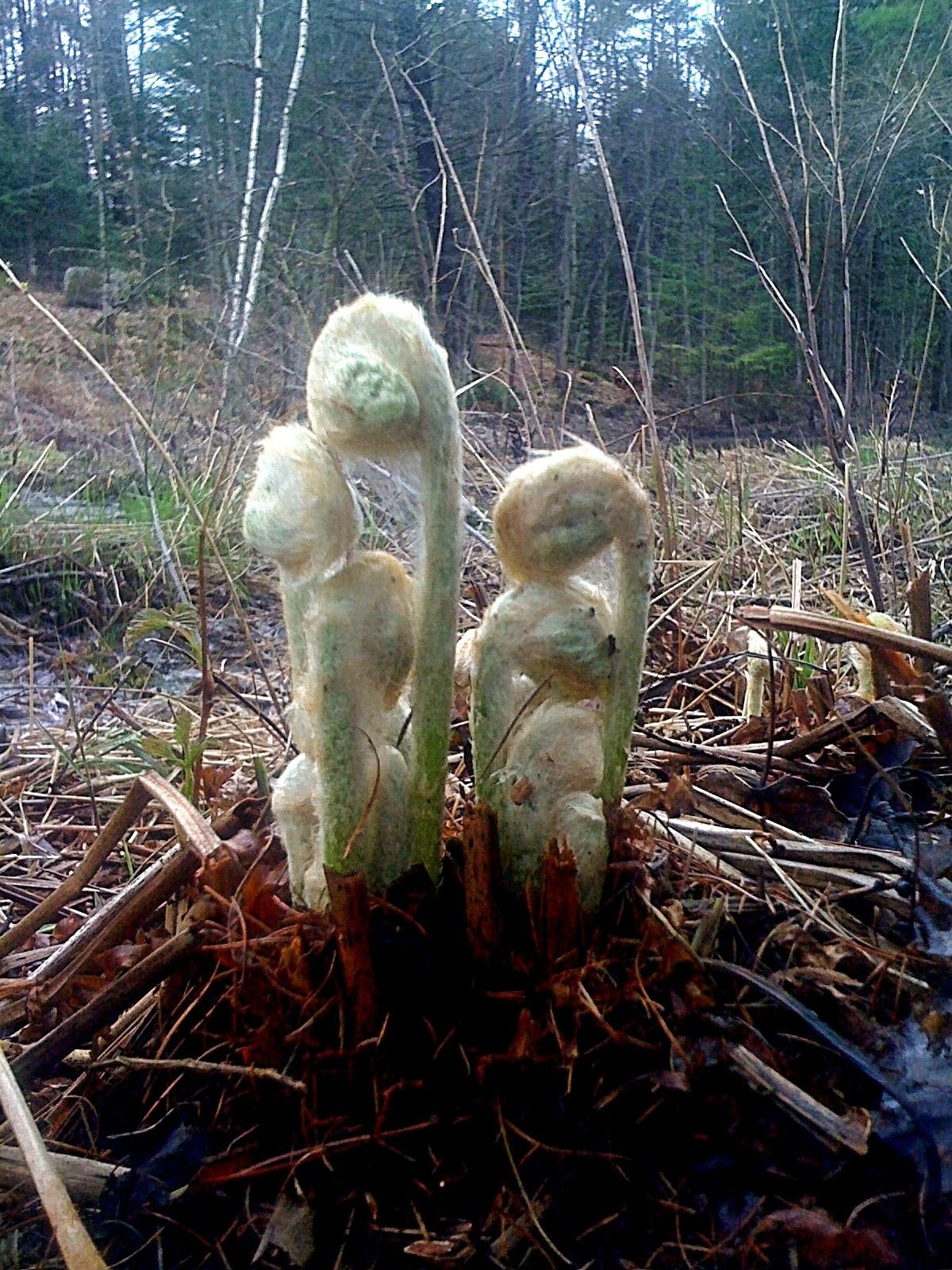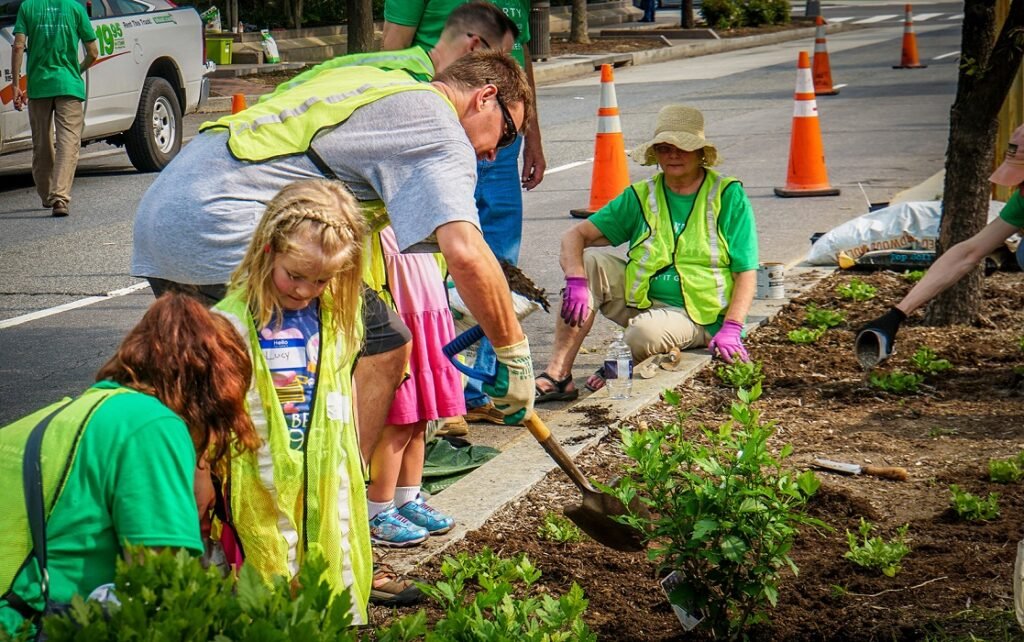Now Reading: How to Hunt and Cook Mollusks in the Wild
-
01
How to Hunt and Cook Mollusks in the Wild

How to Hunt and Cook Mollusks in the Wild
Gentle waves dance along the untouched shoreline, carrying with them a secret bounty hidden beneath the surface. In the ethereal world of the wild, amidst the tranquil symphony of nature, lies an ancient treasure trove waiting to be discovered: mollusks. These magical creatures, adorned in intricate shells, boast a succulent and delicate flesh that has enchanted culinary enthusiasts for centuries. Whether you find yourself wandering along a deserted beach or exploring the rugged coastline, this guide will unveil the art of hunting and cooking mollusks in the wild, embracing their elusive allure and celebrating the flavors of the untamed. So, aqua adventurers, sharpen your senses and let us embark on a gastronomic journey where sea meets land, as we unlock the secrets of hunting and cooking mollusks in the majestic wilderness.
Table of Contents
- Preparing for the Hunt: Understanding Mollusk Habitats and Behavior
- Essential Tools and Techniques for Mollusk Hunting in the Wild
- From Tide to Table: Sustainably Harvesting and Cleaning Mollusks
- Taking Culinary Delights to the Next Level: Mouthwatering Recipes for Cooking Mollusks
- Exploring the Unknown: Rare Mollusk Varieties Worth Discovering
- Q&A
- In Summary

Preparing for the Hunt: Understanding Mollusk Habitats and Behavior
When venturing into the fascinating world of mollusk hunting, it is crucial to equip yourself with an understanding of their habitats and behavior. Mollusks, the diverse group of invertebrates that includes snails, clams, and octopuses, inhabit a wide range of environments, from the depths of the ocean to freshwater streams and even our own backyards.
To successfully hunt for mollusks, it is essential to know where to find them. Coastal areas are often rich in a variety of mollusk species, especially intertidal zones where land merges with the sea. Mollusks have developed a remarkable ability to adapt to their surroundings, so being aware of their preferred habitats can greatly increase your chances of finding them. Sandy beaches, rocky shores, and even mangrove forests serve as ideal dwellings for different mollusk species, each with its own unique characteristics and behaviors.
- Snails: These fascinating creatures can be found in a multitude of environments, from the damp soil of gardens to the towering branches of trees. Keep an eye out for their unmistakably spiral-shaped shells in leaf litter and under rocks. Take note that some snails are nocturnal, so a night-time search could prove fruitful.
- Clams: These bivalved mollusks can be found buried in sandy or muddy substrates near ocean bottoms, riverbanks, or even lakeshores. Digging carefully with a shovel or raking with a metal detector can uncover these elusive treasures. Remember to check local regulations and obtain permits before collecting clams as many areas have restrictions on shellfish harvesting.
- Octopuses: As masters of disguise, octopuses are known for their cunning ability to blend seamlessly into their surroundings. Though they can be found in various marine habitats, including coral reefs and kelp forests, pay attention to rocky crevices and caves where they may hide during the day. Observing their behavior from a distance is recommended, as their ink-jet defense mechanism could leave you temporarily blinded!
By taking the time to comprehend mollusk habitats and behaviors, you are setting yourself up for a rewarding and successful hunt. Remember to always respect the environment and obtain any required permits before embarking on your adventure. Now, armed with knowledge, go forth and discover the fascinating world of mollusks!

Essential Tools and Techniques for Mollusk Hunting in the Wild
When it comes to mollusk hunting in the wild, having the right tools and techniques can make all the difference in your success. From clam digging to foraging for snails, here are some essential items to bring on your next mollusk adventure:
- Mollusk Identification Field Guide: A reliable field guide specific to mollusks can help you identify various species you encounter. Look for one that includes clear images, detailed descriptions, and information on habitats.
- Clam Rake: A sturdy clam rake with long tines can be indispensable for digging up clams buried beneath the sand or mud. Ensure it has a comfortable grip and is made from durable materials.
- Wading Boots: Protect your feet from sharp shells and slippery rocks with a pair of wading boots. Look for ones with good traction and comfortable neoprene or waterproof material.
- Hand Trowel: A hand trowel comes in handy for delicately uncovering small burrowing mollusks, like razor clams. Look for a small, lightweight one that fits easily in your backpack.
- Mesh Bags: Sturdy mesh bags are ideal for holding your catch without suffocating or damaging the mollusks. Opt for ones with secure closures to prevent any escapees during your hunt.
Once equipped with the right tools, it’s essential to familiarize yourself with effective techniques for mollusk hunting. Here are a few tried-and-true methods to enhance your success:
- Tidal Timing: Research the tides in your area and plan your hunt accordingly. Low tides often expose mollusks, making them easier to locate and collect.
- Observation: Keep a keen eye on the environment. Look out for telltale signs like holes in the sand, water bubbles, or tracks that indicate mollusks may be hiding beneath.
- Patience and Stealth: Approach hunting grounds quietly and be patient. Sudden movements or disturbances can scare the mollusks away, making them more difficult to find.
- Proper Handling: Treat captured mollusks with care and respect. Ensure you are properly licensed and adhere to all local regulations regarding size limits, catch quotas, and protected species.
Armed with the right tools and techniques, your mollusk hunting expeditions will be both fruitful and fulfilling. So get out there, embrace the wild, and uncover the captivating world of these remarkable creatures!

From Tide to Table: Sustainably Harvesting and Cleaning Mollusks
Picture this: the gentle crash of waves against the shore, salty sea breeze in the air, and the anticipation of a delicious seafood feast. Mollusks, such as clams, oysters, and mussels, are not only culinary delights but also directly linked to the health of our coastal ecosystems. Ensuring sustainable harvesting and cleaning practices allows us to savor these delectable treats while safeguarding the delicate balance of nature.
Sustainable mollusk harvesting starts with responsible fishermen and shellfish farmers who prioritize maintaining healthy populations and preserving the habitat upon which these creatures depend. This means adhering to strict quotas and fishing regulations, giving populations enough time to replenish and thrive. By protecting the breeding grounds, monitoring the size of harvested individuals, and rotating harvesting areas, we can help maintain the natural cycles that sustain mollusk populations.
Cleaning mollusks is an essential step to guarantee both their safety and our enjoyment. As filter feeders, mollusks naturally accumulate toxins and impurities from their environment. To ensure a clean and safe dining experience, careful cleaning methods must be employed. Soaking the mollusks in a saltwater solution helps to expel any sand or dirt trapped inside, while closer inspection of the shells ensures that only healthy individuals are brought to the table. Sustaining this meticulous approach from tide to table ensures the protection of both our environment and our palates.
Taking Culinary Delights to the Next Level: Mouthwatering Recipes for Cooking Mollusks
Prepare to embark on a gastronomic journey like no other as we explore the world of mollusks and discover incredible recipes to elevate your culinary skills to new heights. Mollusks, with their delicate flavors and unique textures, are a treasure trove waiting to be unleashed in your kitchen.
Whether you’re a seasoned chef or a novice in the kitchen, these mouthwatering recipes will push the boundaries of your culinary expertise. From succulent scallops to tender clams and delectable oysters, we’ve got you covered with a variety of exciting preparations.
- Seared Scallops with Citrus Sauce: Transform buttery scallops into a masterpiece by searing them to perfection and pairing them with a tangy citrus sauce. The crisp exterior and tender interior of the scallops, combined with the burst of citrusy flavors, will tantalize your taste buds.
- Grilled Clams in Herb Butter: Take your grilling game up a notch by preparing these succulent clams with a herb-infused butter. The smoky grill adds a delightful char that enhances the natural sweetness of the clams, while the herb butter brings a burst of freshness to every bite.
- Baked Oysters Rockefeller: Elevate your oyster experience with this classic dish that combines the brininess of oysters with a rich, velvety topping. With a medley of spinach, herbs, and breadcrumbs, these baked oysters are a show-stopper that will leave your guests begging for more.
Unlock the potential of mollusks and let your culinary creativity soar with these extraordinary recipes. From elegant dinner parties to intimate gatherings, these mouthwatering mollusk dishes are sure to impress even the most discerning palates. So, grab your apron and get ready to take your cooking skills to the next level!
Exploring the Unknown: Rare Mollusk Varieties Worth Discovering
When it comes to the world of mollusks, there are a plethora of fascinating and truly unique varieties waiting to be explored. From the secretive abyss of the ocean depths to the hidden corners of secluded shores, rare mollusks offer a glimpse into a world teeming with undiscovered beauty.
One such variety worth discovering is the Golden Cowry. This radiant gastropod is famed for its stunning golden hue, which shimmers like precious metal under the sunlight. Found in the warm waters of the Indo-Pacific region, this rare mollusk is a true gem in the vast expanse of the ocean.
Another intriguing species that captivates marine enthusiasts is the Zebra Nerite. Its intricate striped pattern, reminiscent of a zebra’s coat, makes it stand out among its fellow mollusks. These small yet vibrant snails can be found clinging to rocks and algae in freshwater habitats, providing a delightful sight to behold.
Exploring these rare mollusk varieties not only expands our knowledge of the diverse marine ecosystem, but it also allows us to appreciate the wonders that lie beneath the surface of our vast oceans. Each of these creatures holds its own unique story, waiting to be discovered and shared with the world.
Q&A
Q: What are some popular types of mollusks that can be hunted and cooked in the wild?
A: Some popular mollusks that can be hunted and cooked in the wild include clams, mussels, oysters, and snails.
Q: Where is the best place to find mollusks in the wild?
A: Mollusks can be found in a variety of habitats, such as rocky shores, sandy beaches, and intertidal zones. It’s essential to research the specific habitat preferences of the mollusk you wish to hunt before venturing out.
Q: What tools and equipment do I need for hunting mollusks?
A: Most mollusk hunters require a few basic tools, such as a sturdy shovel or rake, a bucket or mesh bag for collecting, gloves for protection, and a tide chart or lunar calendar to determine low tide.
Q: Are there any regulations or permits required for hunting mollusks?
A: Yes, it is crucial to familiarize yourself with local regulations and obtain any required permits before hunting mollusks. Different regions may have restrictions, size limits, or seasonal closures to protect these important marine species.
Q: What are some important tips to remember while hunting for mollusks?
A: Always respect the environment and only take what you need. Check local water quality advisories to ensure that the mollusks are safe to consume. Be cautious of sharp shells and check the legal limit for collection to avoid over-harvesting.
Q: How can I safely clean and cook mollusks in the wild?
A: To clean, rinse the mollusks thoroughly with freshwater to remove any sand or debris. For cooking, you can simmer them in a flavorful broth or steam them until the shells open. Make sure to discard any mollusks that do not open during cooking, as they may be unsafe to eat.
Q: Are there any poisonous mollusk species I should avoid?
A: While most mollusks are safe to eat, it’s essential to be aware of potential risks. Some species, like the cone snail or certain sea slugs, can be toxic. If you are unsure, it is best to consult a local expert or guide to ensure your safety.
Q: What are some delicious recipes utilizing freshly hunted mollusks?
A: There are numerous appetizing recipes using freshly hunted mollusks, such as classic dishes like clam chowder, garlic butter steamed mussels, or grilled oysters with a herb-infused butter. The possibilities are endless and can be adapted to various culinary preferences.
In Summary
As we come to the end of this mollusk hunting and cooking journey, one thing is certain – the wild is a treasure trove waiting to be discovered. From the crashing waves that conceal a world of exquisite mollusks, to the crackling fire that transforms these bounties into delectable masterpieces, our adventure has only scratched the surface.
While we have explored various tactics and techniques to track down these elusive creatures, it is important to remember the delicate balance of nature. As true stewards of the land, we bear the responsibility to only take what we need and preserve the habitats we venture into. Whether we find ourselves on sandy shores, rocky cliffs, or lush mangroves, let us leave no trace but footprints and memories.
Venturing into the wild is an invitation to embrace the unexpected. From the pungent aroma of seaweed as the tides ebb and flow, to the distant cries of seabirds soaring high above, each moment carries with it a sense of wonder and humility. Mother Nature rewards those who approach her bounty with respect and appreciation, granting them the privilege of partaking in a feast like no other.
So, as you embark on your own mollusk-hunting escapades, may you find solace in the symphony of the sea and take delight in every morsel savored. Whether it’s savoring the briny goodness of freshly shucked oysters or relishing the delicate flavors of grilled clams, let these experiences serve as a reminder of our interconnectedness with the natural world.
With this newfound knowledge, go forth and share the joy of your discoveries with friends and loved ones. Let them be captivated by the stories of your mollusk-infused escapades as they savor every bite, their taste buds dancing with the flavors of the wild. May you inspire others to explore the untamed corners of the earth and uncover the hidden treasures that lie within.
Remember, the harvest from the wild is a cuisine like no other, as it embodies adventure, resilience, and the intricate tapestry of life itself. So, armed with knowledge and fueled by curiosity, walk boldly into the wild, ready to conquer the challenges and embrace the rewards of hunting and cooking mollusks.
Until we meet again, happy hunting, happy cooking, and happy feasting, fellow mollusk enthusiasts!
As an affiliate, my content may feature links to products I personally use and recommend. By taking action, like subscribing or making a purchase, you’ll be supporting my work and fueling my taco cravings at the same time. Win-win, right?
Want to read more? Check out our Affiliate Disclosure page.





